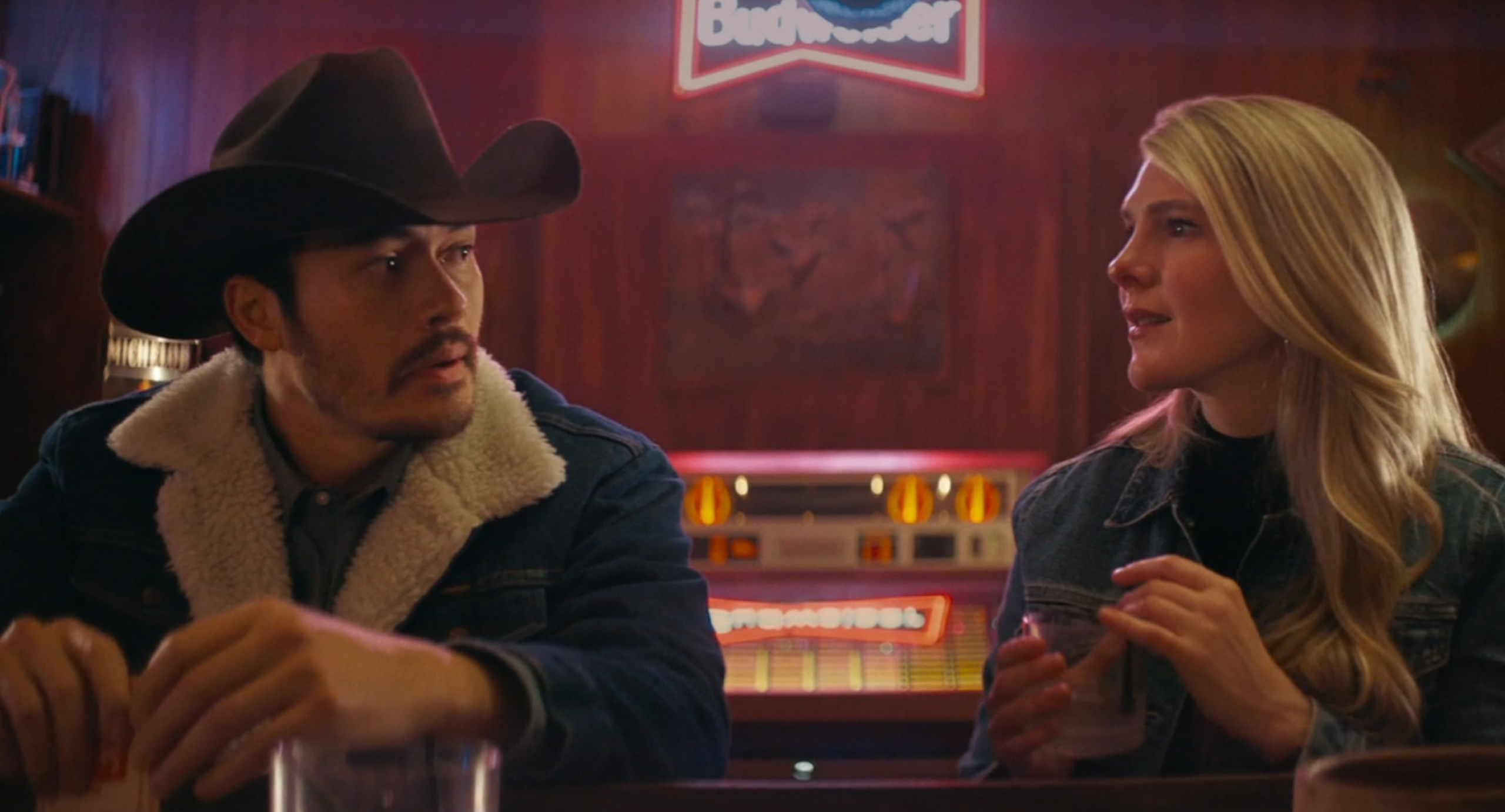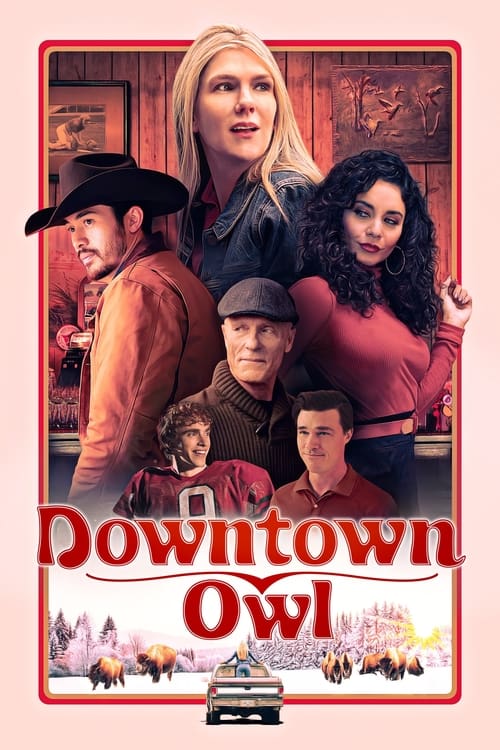Downtown Owl – Film Review
Published April 28, 2024

Downtown Owl, the debut film from the duo Lily Rabe and Hamish Linklater, ventures into the delicate balancing act of comedy and drama against the stark backdrop of a small North Dakota town. Based on the 2008 novel by Chuck Klosterman, the movie attempts to weave together the disparate lives of its characters in the lead-up to a life-altering blizzard. While Rabe and Linklater’s ambition is palpable, and the production quality of the film under their joint direction, alongside producers Bettina Barrow and Rebecca Green, cannot be faulted, Downtown Owl ultimately struggles to fully encapsulate the depth and nuance of its source material.
The casting choices, with Rabe herself stepping in front of the camera as the new-in-town English teacher Julia Rabia, and support from Ed Harris as the reflective Horace Jones, are commendable. Newcomers and seasoned actors alike, including Vanessa Hudgens as Naomi, August Blanco Rosenstein as Mitch Hrlicka, Jack Dylan Grazer as Eli, Finn Wittrock, and Henry Golding in supporting roles, deliver performances that highlight their characters’ individual quests for connection and meaning amidst the monotony of small-town life.
Where the film stumbles, however, is in its pacing and narrative execution. The attempt to juggle the significant emotional arcs of Julia, Horace, and Mitch often leads to a fragmented viewing experience. Each character’s story, rich with potential, is underserved by the necessity to shift focus, leaving their narratives feeling somewhat abbreviated. The richly detailed environment of Owl, meant to serve as a character in its own right, occasionally fades into the background rather than amplifying the stories unfolding within it.
From a directorial standpoint, Rabe and Linklater’s debut demonstrates their clear respect for Klosterman’s material. Their decision to remain faithful to the setting and time period is visually rewarding, with the cinematography capturing the bleak, frozen landscape that mirrors the isolation felt by many of Owl’s inhabitants. Nevertheless, their transition from the intricacies of theater direction to the broader canvas of film seems to encounter a learning curve. At times, Downtown Owl could benefit from a tighter narrative structure and a more dynamic interplay between its central characters.
The humor, though present, wavers in its effectiveness. The film aims to juxtapose the absurdity of daily life against the backdrop of impending doom brought by the blizzard. When it hits, it highlights the inherent irony and resilience of small-town living. Yet, the comedic elements sometimes feel at odds with the film’s more poignant moments, leading to a tonal inconsistency that detracts from the overall emotional impact.
Notably, the performances of Ed Harris and Lily Rabe stand out. Harris, as Horace, offers a grounded, introspective portrayal that anchors the film, providing a necessary counterbalance to the ensemble cast. Rabe, in a dual role as lead actress and co-director, navigates the complexities of Julia with an authenticity that brings warmth and depth to the character, albeit within the constraints of the narrative’s breadth.
The production design and costume departments deserve accolades for their meticulous attention to period detail, effectively transporting viewers to the 1980s. However, the immersive experience crafted by these elements is sometimes undermined by a script that, in its faithfulness to the novel, doesn’t always translate seamlessly to the screen. Linklater’s screenplay manages to capture Klosterman’s voice, yet struggles to condense the novel’s broader themes into the film’s limited runtime.
In terms of thematic exploration, Downtown Owl makes commendable attempts to address the universal search for meaning against the forces of nature and societal expectation. The impending blizzard serves as a metaphor for the uncontrollable aspects of life that the characters must face, reminding viewers of the power of nature and the fragility of human existence. This metaphor, while powerful, is not fully explored, leaving one to wish for a deeper dive into the existential themes presented.
Ultimately, Downtown Owl is a film of unfulfilled potential. It brings together a promising cast, an evocative setting, and a compelling premise but fails to coalesce these elements into a fully satisfying narrative whole. For fans of Klosterman’s novel, the film offers a nostalgic return to the world of Owl. For newcomers, it may serve as an intriguing, albeit uneven, introduction to the themes and characters that populate Klosterman’s work.
As Rabe and Linklater’s directorial debut, the film displays a genuine affection for storytelling and an earnestness in execution that is commendable. It represents a first step in what one hopes will be an evolving filmmaking journey for the pair. While Downtown Owl may not reach the heights it aspires to, it demonstrates the potential for growth and refinement in Rabe and Linklater’s directorial talents.
